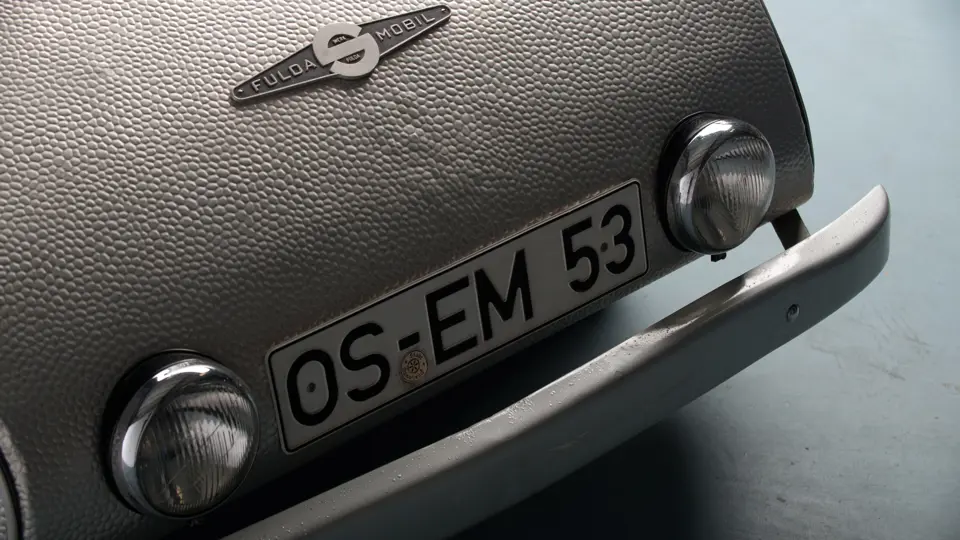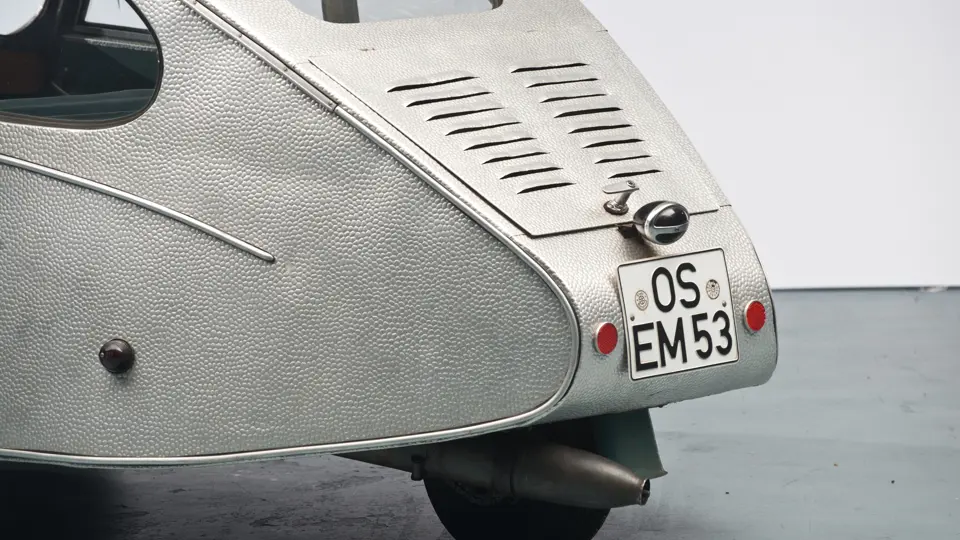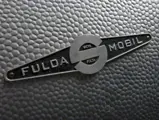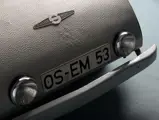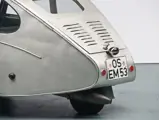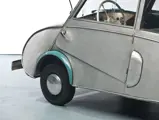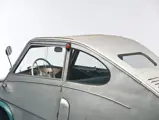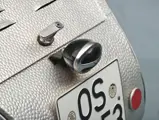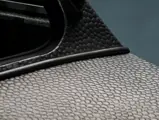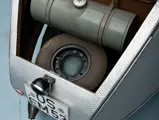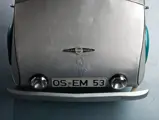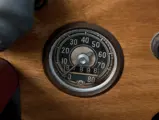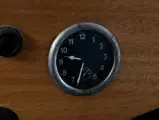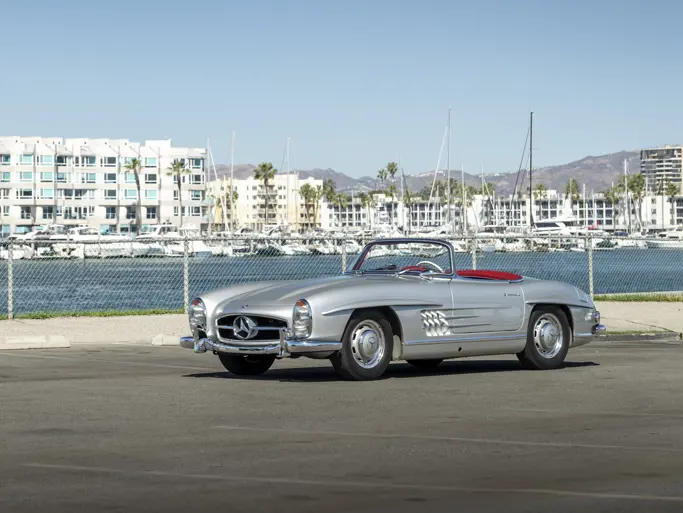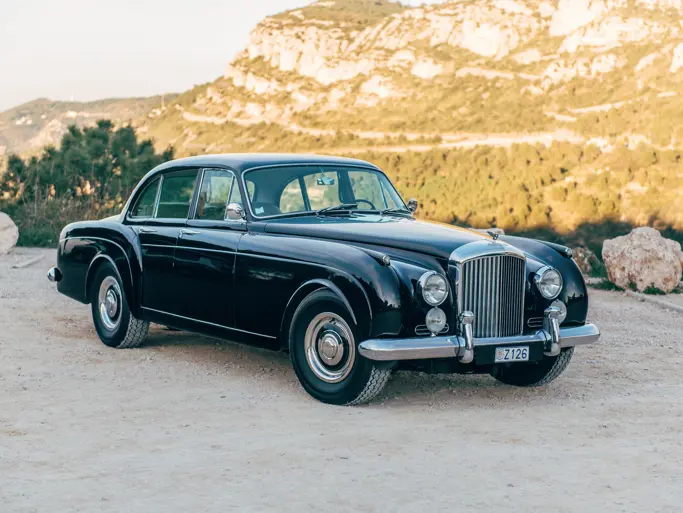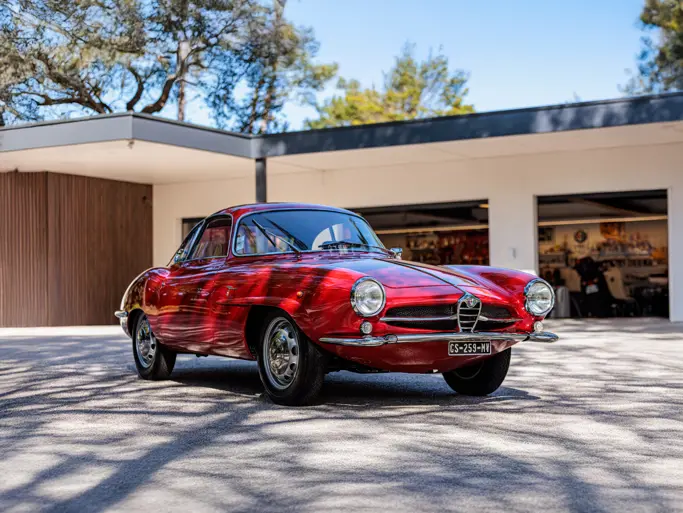Restored as original with unique embossed aluminum bodywork.
SPECIFICATIONS
Manufacturer: Elektromaschinenbau Fulda GmbH
Origin: Fulda, Germany
Production: 380
Motor: Fichtel & Sachs 1-cyl, 2-stroke
Displacement: 359 cc
Power: 9.5 hp
Length: 9 ft. 4 in.
Identification No. 360392
The amusingly rotund Fuldamobil qualifies as perhaps the longest-built microcar, being in production in various forms by various firms throughout the world for nearly 20 years. The story begins with Norbert Stevenson, a young freelance journalist spending all of his spare time in the damp basement of his house designing a small car. His “design department” consisted of piles of papers and drawings scattered over a rickety old table next to a wood and cardboard mock-up of his proposed three-wheeler. A sponsor allowed the purchasing of parts and a motor, but these had to be returned as its partner exited the scene. The design was offered to Karl Schmitt, who was a wealthy, highly qualified engineer and the head of a large Bosch distributorship and an electrical equipment business that repaired electrical generators.
Karl Schmitt had considered entering the small car business as well, and he adopted Stevenson as his official constructor. He was not convinced by the tandem layout, so he polled his employees, asking them if they would rather sit side-by-side or in tandem. They answered with “bench seat” unanimously, and Stevenson, under the watchful eye of Diplom-Ingenieur Schmitt, was pretty much given free-rein to develop his car.
Work began in October 1949, and by Christmas, a chassis was being test-driven on tractor-seats. In January, a body was constructed in steel on a wood frame along camping-trailer lines, with an angled flat front and two separate front windows. It was clear that the motor needed improvement, so Stevenson drove to Nurnberg to see Triumph’s new twin-piston single. The firm’s director, Reitz, saw the little Fulda and asked “What is that silly thing?” whereupon Stevenson turned and drove away. The drivetrain problem was solved by Baker und Pölling, who offered to bore out their chainsaw motor to 250 cubic centimeters and supply it with a sprocket to take a starter motor. Gearbox-makers Hurth offered their three-speed-plus-reverse gearbox.
More prototypes emerged, including roadsters with painted plywood bodies and a more normal, new rounded nose. The filling and painting were too labor-intensive, so it was decided to go the Lloyd route: having the body covered with leathercloth. The glider-manufacturer Schleicher agreed to supply these plywood-on-ash bodies. A pre-series of 48 cars, evenly divided between open roadsters and closed coupes, demonstrated quality control issues with the Baker and Pölling motors.
The motor, however, continued to be fitted into the series production N-1 series, which retained the attractive rounded nose shape, beginning in August 1951. A total of 320 of these were built before the B&P chainsaw motor was replaced by a 360-cubic centimeter Fichtel & Sachs stationary-type motor on the N-2 model a year later.
Shortly after the introduction of the new Sachs motor, the bodywork received a startling overhaul that would make the little Fulda’s name widely-known. The plywood skin was replaced by panels of embossed aluminum, which eliminated painting, and the deep embossing hid small surface faults and damage well. It became known as the “silver flea.” A smooth, aluminum-painted version was also available at an extra cost. The car achieved a distinctive position in the marketplace as a comfortable, well-sprung family vehicle, which, with its folding seat, could be used on camping trips.
This well-known car was obtained from a German museum that had completely rebuilt the body over hundreds of hours in 1980, using fresh ash beams and the correct pattern-embossed aluminum sheet. This vintage German aluminum pattern is no longer available, so it would be impossible to rebuild the car to original specs today, presenting an exceptional opportunity to acquire a very rare and significant microcar.
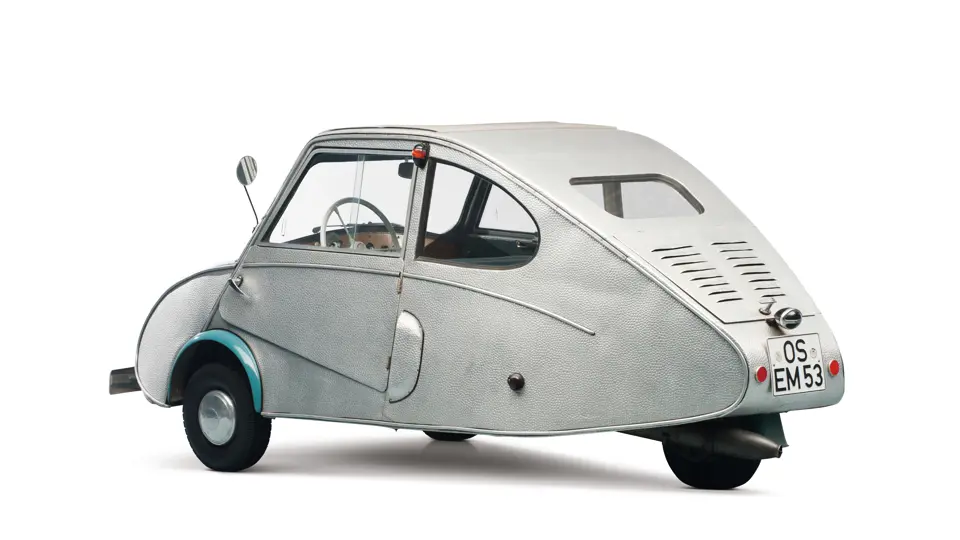
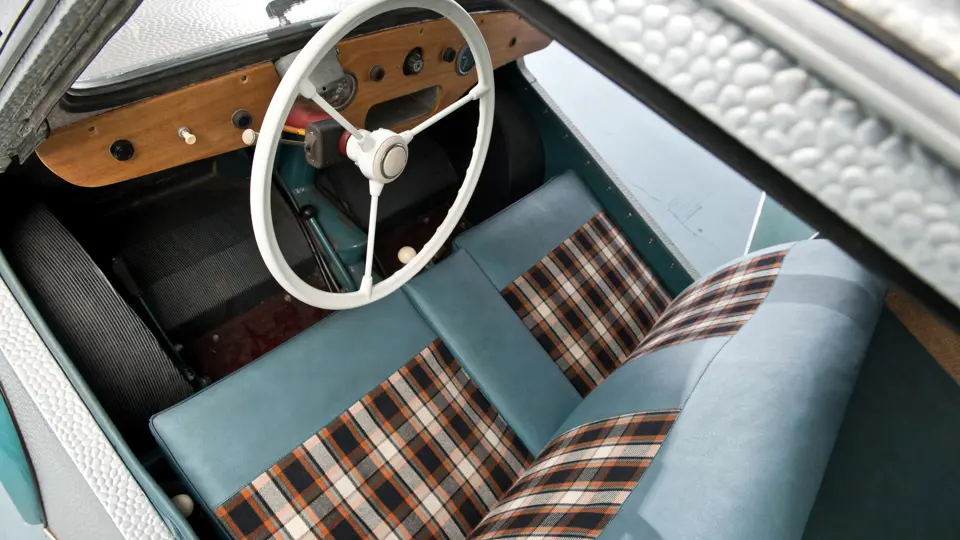


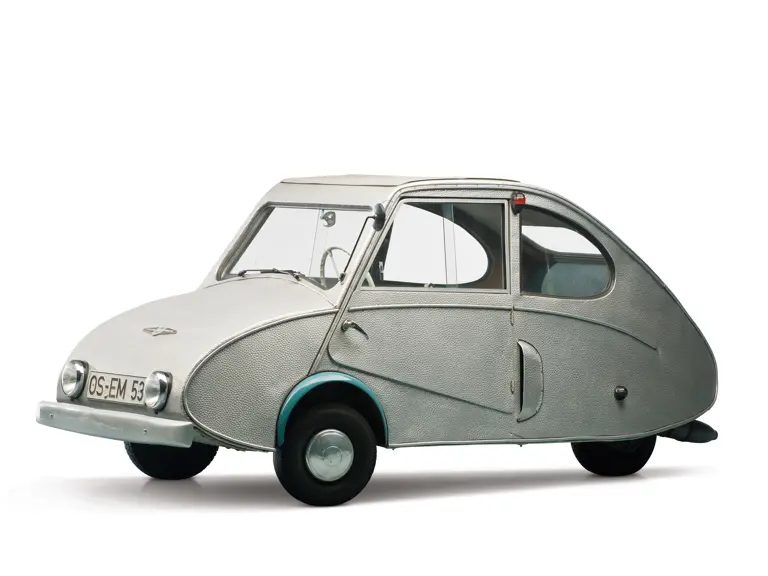
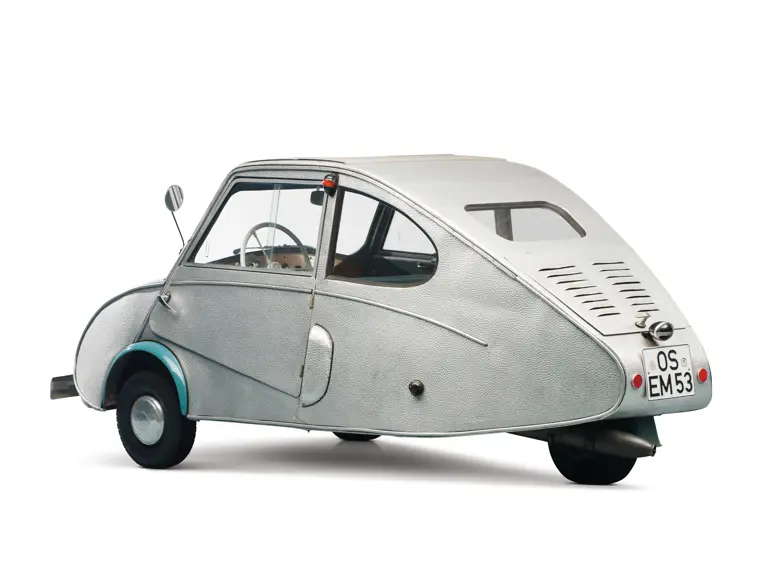
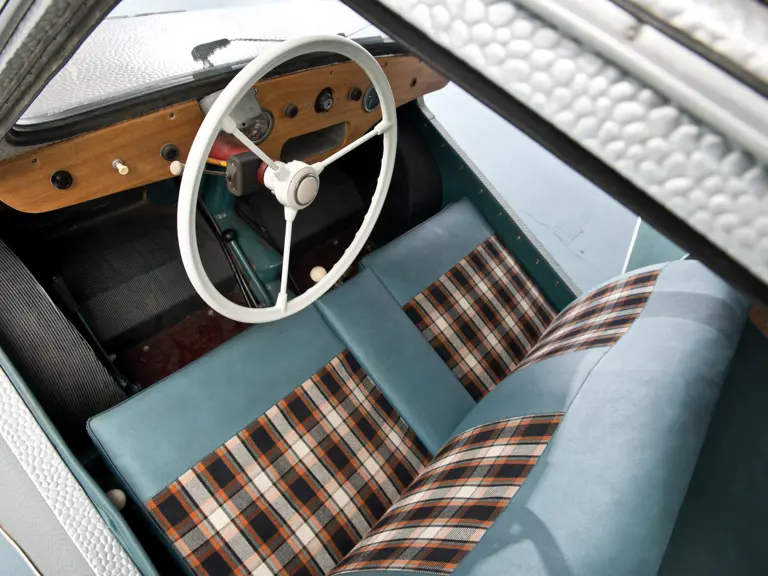
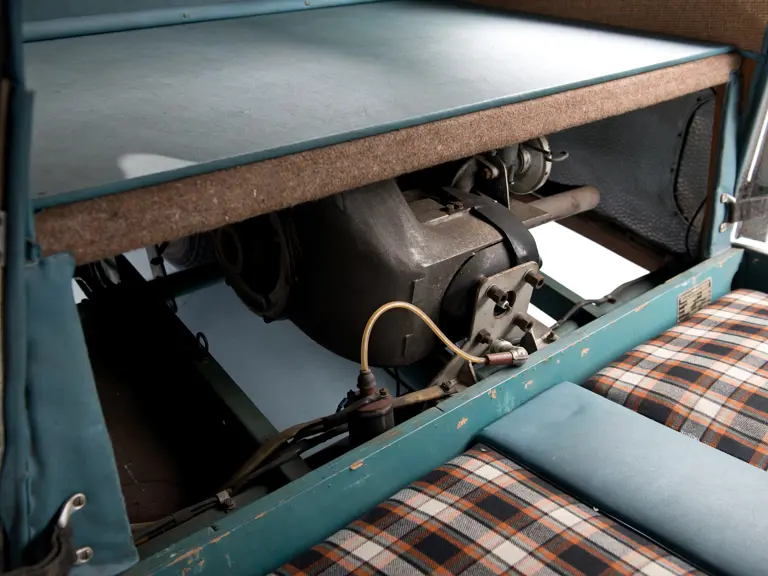
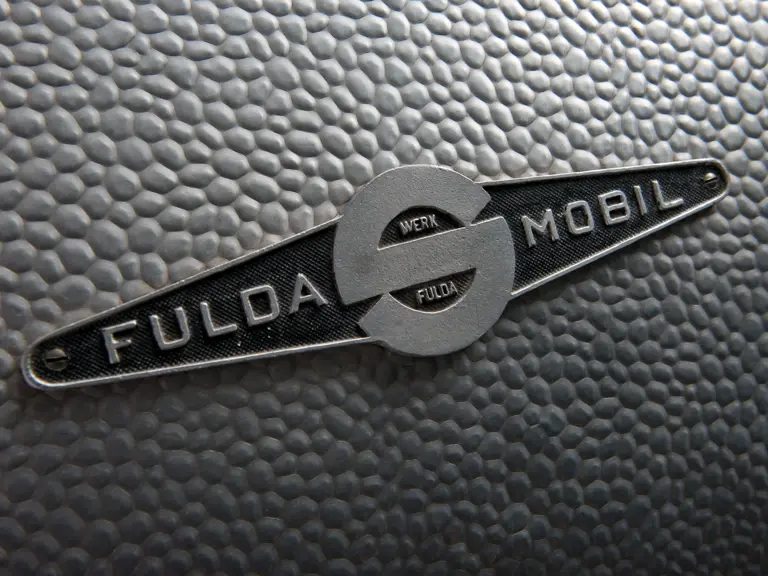
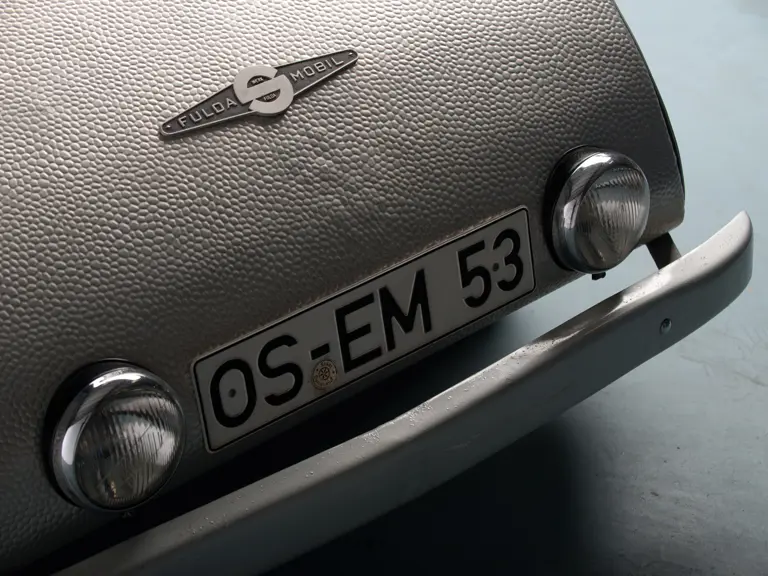
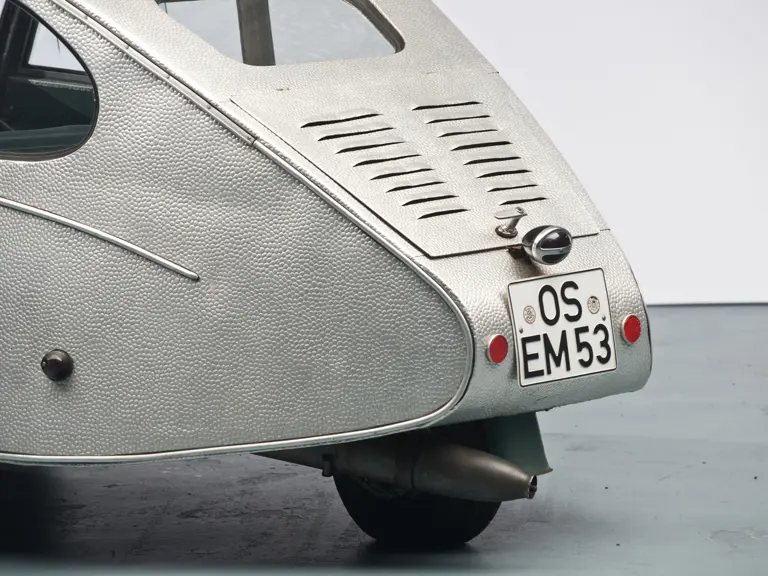

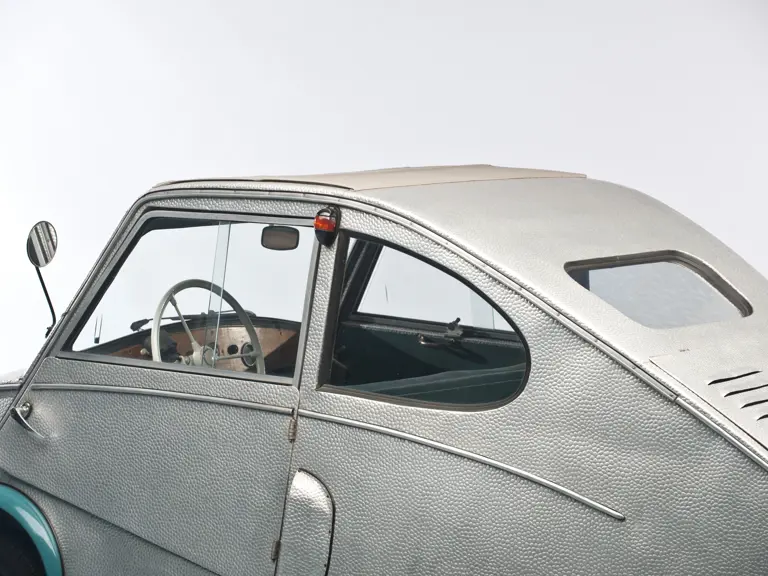
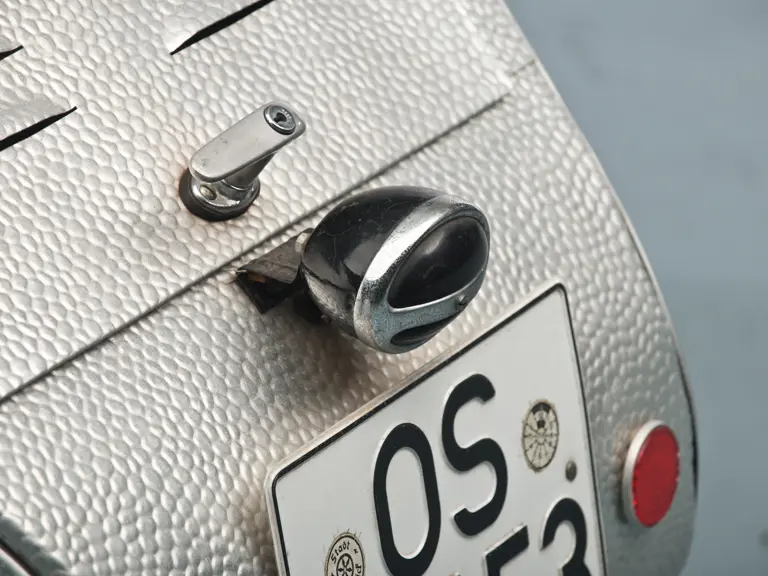
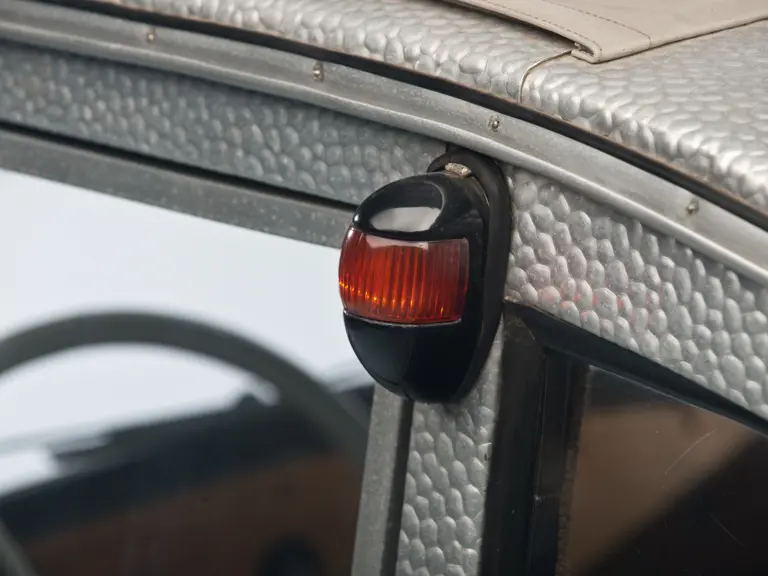

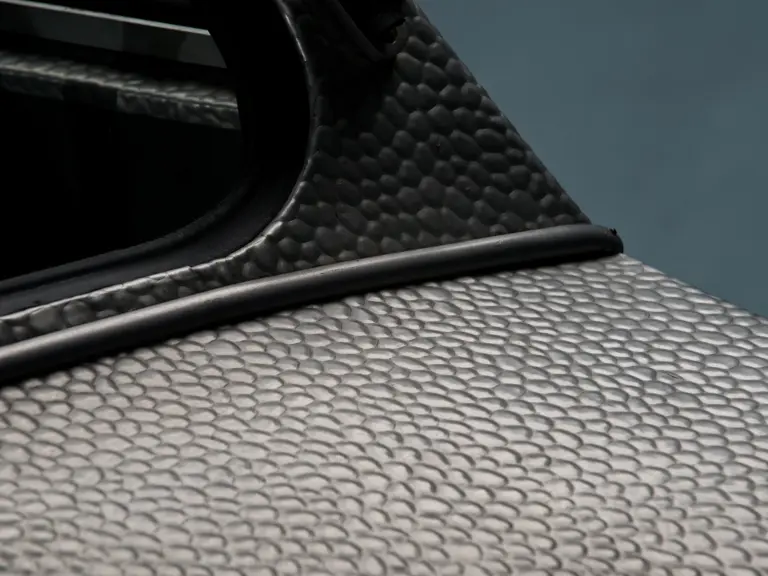
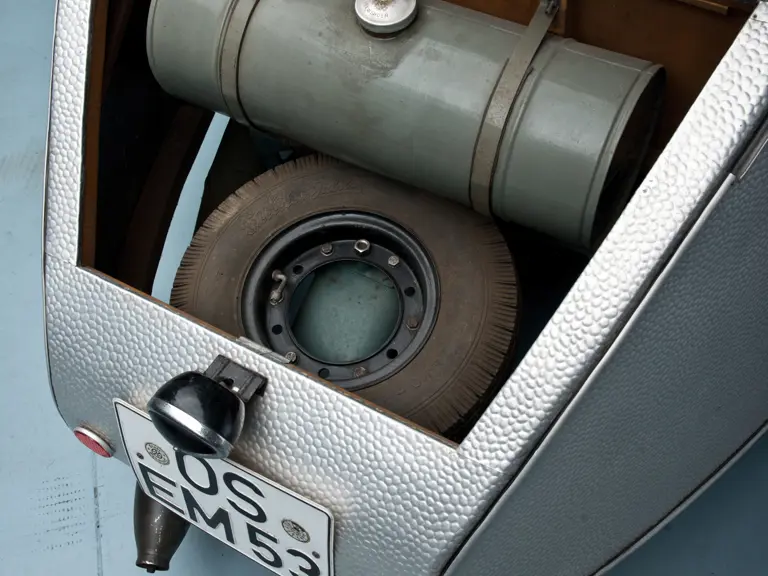



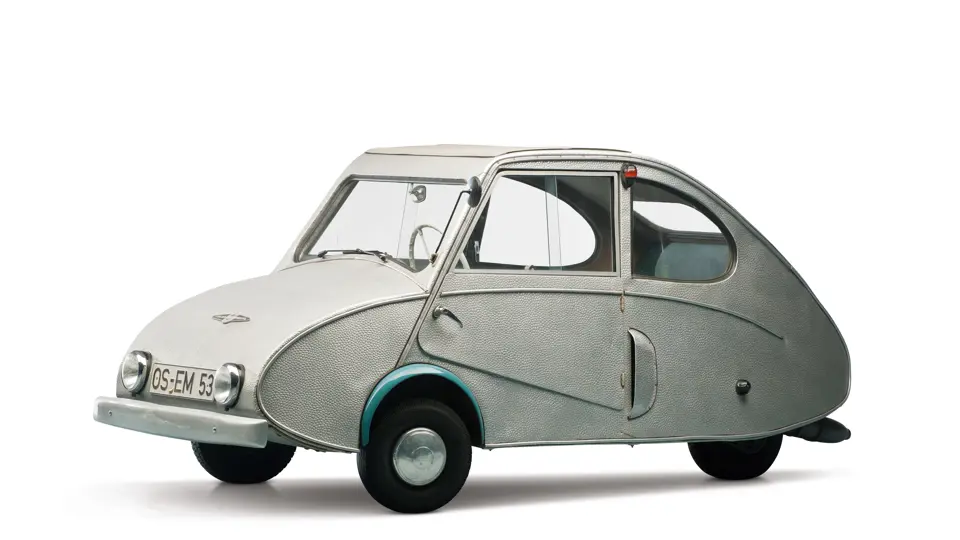
 | Madison, Georgia
| Madison, Georgia

